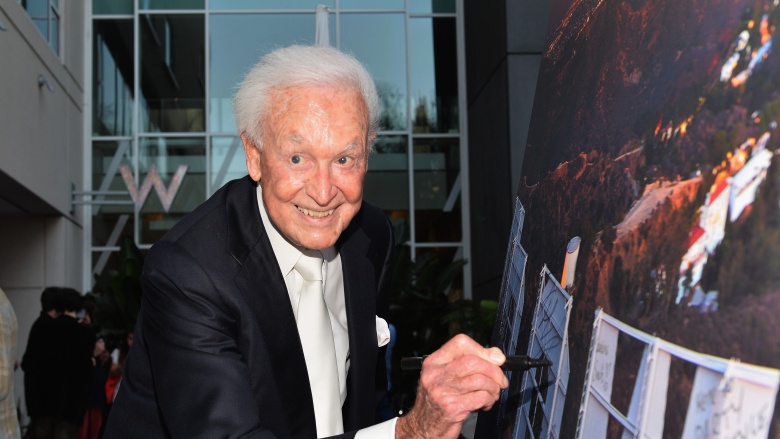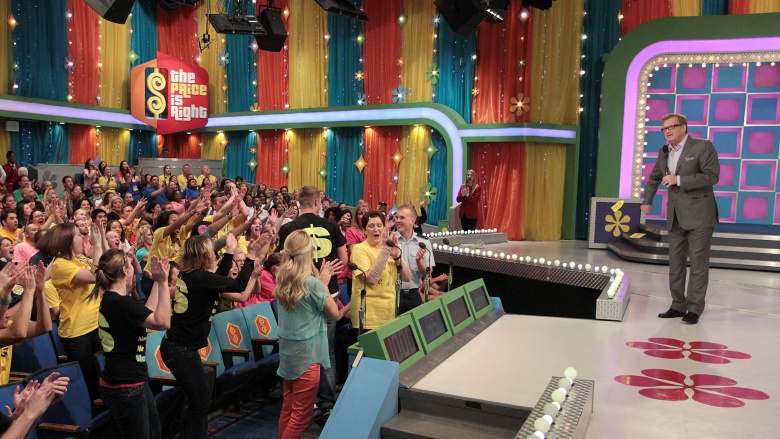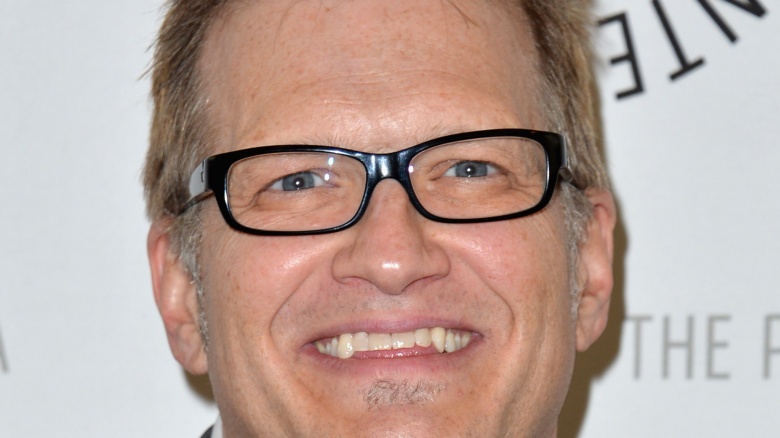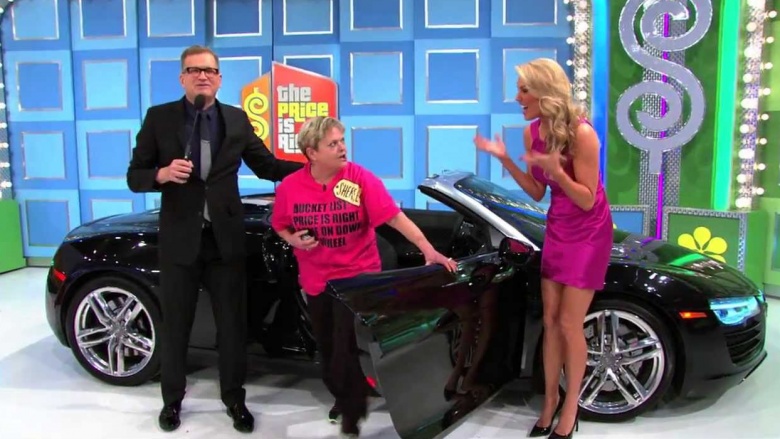The Untold Truth Of The Price Is Right
A staple of daytime TV since 1972, The Price is Right is the longest-running game show in American television history. Hosted by the iconic Bob Barker (and a bevy of "Barker's Beauties") for more than 35 years and 7,000 episodes, it's continued to thrive after Barker's retirement under the stewardship of comedian Drew Carey. Over the years, thousands of people have heeded the call to "come on down" to bid on products, play some Plinko, spin the big wheel, and take part in the Showcase Showdown. Here's a look behind the scenes.
It was inspired by Let's Make a Deal, and vice versa
When The Price is Right debuted in 1972, it was actually titled The New Price is Right, a title it kept for a little under a year. Why? It was loosely based on a primetime game show that had aired as early as 1956. It was kind of boring, though: contestants guessed how much common products cost and won small prizes. In the early '70s, producer Mark Goodson wanted to revive The Price is Right, but CBS told him the concept was outdated, and that the new standard for game shows was NBC's Let's Make a Deal. Goodson, in turn, heavily borrowed from that show's raucous circus-type atmosphere, lifting gimmicks such as pulling people out of the studio audience to be contestants, having them play a whole bunch of different games, and utilizing lots of flashing lights and sound effects to get the audience hyped up. (Let's Make a Deal went off the air in the 1980s but was revived in 2009 thanks to the strength of The Price is Right. The new iteration was hosted by Drew Carey's Whose Line is It Anyway? cohort Wayne Brady.)
Being a contestant involves a lot of waiting in line
Every game show has a different process for contestant selection. Jeopardy!, for example, is quite rigorous, putting prospective guests through multiple written tests, an interview, and a live version of the game against other hopefuls. Deal or No Deal, on the other hand, merely asked contestants to send in a video of themselves acting fun. The Price is Right is far more immediate. On taping days, contestants/studio audience members line up for as long as four hours outside Bob Barker Studio at CBS Television City in Los Angeles. Then, ten at a time, they're herded in front of a producer who asks them each one question, where they've got to show off a sparkling personality and lots of energy. Only about 100 people or so get picked to sit in the studio audience, and the lucky contestants find out they've been selected when the announcer calls their name.
One contestant bid perfectly, and producers thought he was cheating
In 2008, a huge Price is Right fan named Terry Kniess was picked to "come on down" to Contestant's Row. He made it all the way to the Showcase Showdown, where he did something that nobody in the show's history had done, before or since: He guessed the exact price of his prize package. Taping stopped for almost an hour, with producers expecting to turn up some kind of cheating. But Kniess came up clean: he'd watched the show every day for years, and realized that many prizes were repeated. He simply memorized all their values, and added them up in his head during his appearance. (Kniess won a karaoke machine and a pool table, among other prizes.)
A lot of people tried out to replace Barker
Finding a replacement for Barker wasn't easy. The search was so difficult, in fact, that he even offered to delay his retirement if a new host couldn't be found in time. He did get a say in who'd take over (along with executives from CBS, the show's production company, and other staffers). A number of candidates auditioned, and all hosted a mock, non-broadcast episode—including George Hamilton, Ian Ziering, Mario Lopez, John O'Hurley, and former Double Dare host Marc Summers. Summers was reportedly Barker's choice, but he didn't end up with the gig (although he did go on to help host a traveling version of the show). Antiques Roadshow host Mark Walberg also missed the cut—and like Summers, has gone on to host the touring Price Is Right Live! Rosie O'Donnell was also rumored for the job, but publicly took herself out of the running. Carey was finally offered the gig in the summer of 2007, after CBS chairman Les Moonves was impressed while watching him host the primetime game show Power of 10.
You have to pay your taxes right away
A lot of Price is Right episodes may end with a winning contestant sitting in the brand new car they've just won, but they don't drive it off the set and all the way home. Instead, the show sets up winners with a Los Angeles car dealership, who then works with a dealership in the winner's hometown, and then they get to pick up their car—but only after they pay the taxes and registration fees on the automobile first. And speaking of taxes, they're due the day of the episode's taping. California law counts any prizes or money won on game shows as income, and taxes have to be paid before the prizes can be awarded. For example, if a contestant wins a car, they'll have to pay at least $1,000 in taxes right there in the Price is Right studio. Many contestants just use the cash won in other games on the show.




